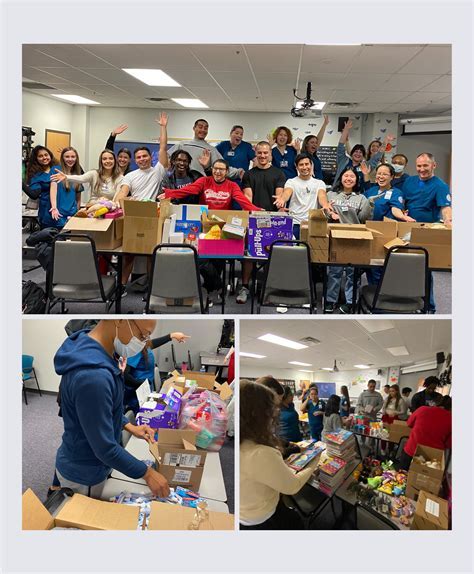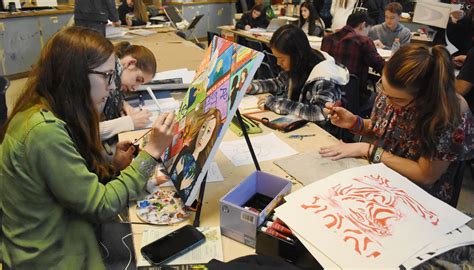Nurturing Artistic Talent for Academic Success
Aspiring artists with an eye on university admission face a unique set of challenges. Art portfolios serve as gatekeepers to esteemed art schools and beyond, demanding a comprehensive showcase of raw talent, technical proficiency, and conceptual depth. To navigate this competitive landscape, meticulous preparation is essential. This article will delve into the essential components of university prep art and design, providing comprehensive guidance for aspiring students to unleash their artistic potential and secure their place in top-tier programs.

Key Pillars of University Prep Art and Design
1. Portfolio Development
The cornerstone of university applications, a strong portfolio showcases the breadth and depth of an applicant’s artistic abilities. Start early by gathering a diverse collection of your best artworks, selecting pieces that demonstrate a range of techniques, subject matter, and creative approaches. Seek feedback from trusted mentors, teachers, or art professionals to refine your portfolio and identify potential weaknesses.
2. Technical Proficiency
Mastering technical skills is crucial for conveying artistic intent effectively. Dedicate time to developing a solid foundation across various mediums, including drawing, painting, sculpture, and digital art. Engage in regular practice to hone your coordination, precision, and attention to detail. Explore different materials, tools, and techniques to expand your artistic vocabulary.
3. Conceptual Depth
Beyond technical prowess lies conceptual depth – the ability to convey ideas, emotions, and narratives through art. Seek inspiration from diverse sources, such as literature, history, and current events. Develop your critical thinking skills by analyzing and interpreting artworks, identifying their artistic influences and cultural significance. Articulate your artistic vision clearly, both verbally and in writing.
Crafting a Winning Portfolio
4. Cohesive Presentation
Organize your portfolio to create a coherent narrative that showcases your artistic journey. Arrange artworks in a logical sequence, highlighting your growth and evolution as an artist. Consider the presentation format, whether physical or digital, and ensure the layout complements your artwork.
5. Personal Statement
The personal statement serves as an opportunity to articulate your artistic aspirations and motivations. Share your personal story, explaining how your experiences have shaped your artistic development. Clearly convey why you are passionate about art and how you intend to contribute to the field.
6. Supplementary Materials
Include additional materials to supplement your portfolio and personal statement. Letters of recommendation from teachers, mentors, or art professionals can provide valuable insights into your work ethic, creativity, and potential. Submit transcripts and any relevant coursework to demonstrate your academic capabilities.
Common Mistakes to Avoid
1. Delaying Preparation
Starting early is pivotal for building a strong portfolio and securing your place in top programs. Avoid procrastination and allocate ample time for developing your skills and creating a cohesive body of work.
2. Neglecting Concept Development
While technical proficiency is essential, neglecting conceptual depth can limit your artistic potential. Dedicate time to research, critical analysis, and experimentation to develop meaningful and impactful artworks.
3. Submitting Incomplete Portfolios
Ensure your portfolio is complete and well-organized before submitting it. Incomplete or poorly presented portfolios may hinder your chances of admission. Seek feedback from trusted individuals to identify any areas for improvement.
Tips and Tricks for Success
1. Seek Mentorship
Connect with experienced artists or art professionals who can provide guidance and support. Mentors can help refine your techniques, expand your artistic horizons, and prepare you for the rigors of university-level art education.
2. Utilize Online Resources
Access a wealth of online resources, including tutorials, workshops, and virtual exhibitions. Engage with online art communities to connect with other aspiring artists and gain valuable insights into industry trends.
3. Experiment with New Mediums
Stepping outside your comfort zone by experimenting with new mediums can enhance your creativity and expand your artistic skillset. Explore different materials, techniques, and approaches to discover hidden talents and spark fresh ideas.
4. Visit Art Schools and Exhibitions
Immerse yourself in the art world by visiting university art schools and exhibitions. Observe the works of established artists, attend lectures, and interact with students and faculty to gain a deeper understanding of the university art scene.
Effective Strategies for University Prep Art and Design
1. Create a Dedicated Workspace
Establish a dedicated workspace where you feel inspired and motivated to create. Surround yourself with art supplies, reference materials, and inspirational images to foster your artistic development.
2. Establish a Regular Practice Routine
Carve out dedicated time for practicing your artistic skills. Consistency is key for improvement and maintaining motivation. Break down complex tasks into smaller, manageable chunks to avoid feeling overwhelmed.
3. Seek Feedback and Critique
Regularly share your work with others and seek constructive feedback. Listen attentively to critiques and use them as opportunities for growth. Embrace criticism as a valuable tool for refining your techniques and enhancing the impact of your artwork.
Conclusion
University prep art and design is a challenging but rewarding journey that prepares aspiring artists for academic success and beyond. By embracing the principles of portfolio development, technical proficiency, and conceptual depth, students can create a winning portfolio that showcases their artistic potential. Utilizing effective strategies and avoiding common pitfalls will empower students to navigate the competitive world of university art and secure their place in top-tier programs. The path to creative excellence lies within reach for those who invest time, dedication, and passion in their pursuit.
Useful Tables
Table 1: Top Art Schools for University Preparation
| Rank | University | Location |
|---|---|---|
| 1 | Rhode Island School of Design | Providence, RI |
| 2 | School of the Art Institute of Chicago | Chicago, IL |
| 3 | California Institute of the Arts | Valencia, CA |
| 4 | Parsons School of Design | New York, NY |
| 5 | Pratt Institute | Brooklyn, NY |
Table 2: Effective Strategies for University Prep Art and Design
| Strategy | Description |
|---|---|
| Create a Dedicated Workspace | Establish a designated area for inspiration and creation. |
| Establish a Regular Practice Routine | Allocate dedicated time for practicing art skills. |
| Seek Feedback and Critique | Regularly share work for constructive feedback and growth. |
| Utilize Online Resources | Access virtual resources, workshops, and art communities. |
| Experiment with New Mediums | Explore different materials and techniques to expand artistic vocabulary. |
Table 3: Common Mistakes to Avoid in University Prep Art and Design
| Mistake | Description |
|---|---|
| Delaying Preparation | Starting late can hinder progress and limit growth. |
| Neglecting Concept Development | Focusing solely on technical skills can limit artistic potential. |
| Submitting Incomplete Portfolios | Incomplete or poorly presented portfolios can damage admission chances. |
| Isolating Art from Academics | Failing to connect art with academic coursework can limit artistic expression. |
| Lacking Motivation and Inspiration | Maintaining passion and drive are essential for artistic success. |
Table 4: Tips and Tricks for University Prep Art and Design
| Tip | Description |
|---|---|
| Seek Mentorship | Connect with experienced artists for guidance and support. |
| Visit Art Schools and Exhibitions | Engage with the art world by immersing yourself in university art scenes. |
| Explore Non-Traditional Art Forms | Expand creativity by stepping outside traditional art boundaries. |
| Embrace Collaboration | Partner with other artists to gain diverse perspectives and enhance projects. |
| Continue Experimenting | Curiosity and experimentation are vital for artistic growth. |
